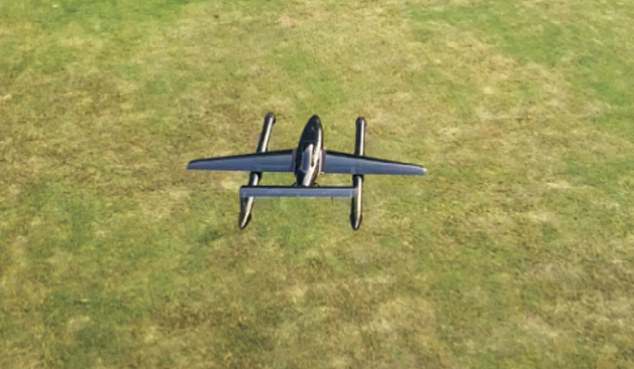[ad_1]
China has unveiled its latest technological breakthrough that could change the future of naval warfare.
Aerospace engineers in the East Asian superpower have developed what is believed to be the world’s first high-speed vertical take-off and landing (VTOL) drone powered by a jet engine.
The drones are commonly used for mapping, firing weapons, delivering goods and for carrying out large scale surveillance operations – but need long runways or aircraft carriers when taking off and landing.
However, the new VTOLs, which were developed over 10 years by professors Wang Yaokun and Qiu Yuting, combine vertical lifting and jet power to make them quicker and sleeker at getting off the ground.
The breakthrough was unveiled at Beihang University, an institute targeted by US sanctions, and is being touted by Chinese media as ‘potentially transforming every Chinese destroyer, frigate or amphibious vessel into a mini aircraft carrier’.
The professors behind the development wrote in a paper published last month: ‘We’ve compared it to other mainstream VTOL drones at present. It is far superior in terms of speed.’
They also said that the 45kg drones, which are made up of lightweight T-700-grade carbon fibre, can be used in ‘extreme conditions’ and have hit speeds of up to 142mph with ease when tested.
The VTOLs rise into the air with help of rotors underneath which – like most others – are complimented by a miniature turbo jet engine, before its true complex nature then sets it apart.

Aerospace engineers in the East Asian superpower have developed what is believed to be the world’s first high-speed VTOL drone (above) powered by a jet engine

The new VTOLs combine vertical lifting and jet engine power to make them quicker and sleeker at getting off the ground

Chinese media have touted the development as ‘potentially transforming every Chinese destroyer, frigate or amphibious vessel into a mini aircraft carrier’
Unlike others, the aircraft’s rotors gradually spin down and become enclosed once it is high and fast enough, which then allows for a reduction of air drag by an eye-watering 60 per cent.
This key function allows for high-speeds to be reached while the full capability of the drone is retained, with a thermal shield of up to 700 degrees ensuring that the structure is not compromised.
However, there has been some criticism levelled at the drone’s rotor system occupying space on the craft may subsequently impact fuel efficiency as well as its weapons and cargo capacity.
This means the drones are likely to not have the capacity for large munitions, and instead may be more suited to surveillance ops.
The project is believed to have begun in 2015 after the Chinese navy requested ‘non-carrier vessels’ which emphasised the need for ‘multi-drone coordination, high-speed reconnaissance and vertical take-off and landing from destroyer decks’.
It comes just weeks after US Secretary of State Pete Hegseth warned that China’s potential invasion of Taiwan ‘could be imminent’, with Taiwan’s Deputy Foreign Minister also warning of the same.
An unnamed defence expert told the South China Morning Post that the new VTOLs mean the Chinese navy could operate high-speed, long-range reconnaissance and strike drones from any warship in future combat.
They said: ‘This turns every major surface combatant into a forward-operating base. The enemy can’t predict where the next strike will come from.’
The technology could also boost China’s attempts at laying claim to the South China Sea by using the high-speed drones to deter competitors.
[ad_2]
This article was originally published by a www.dailymail.co.uk . Read the Original article here. .

